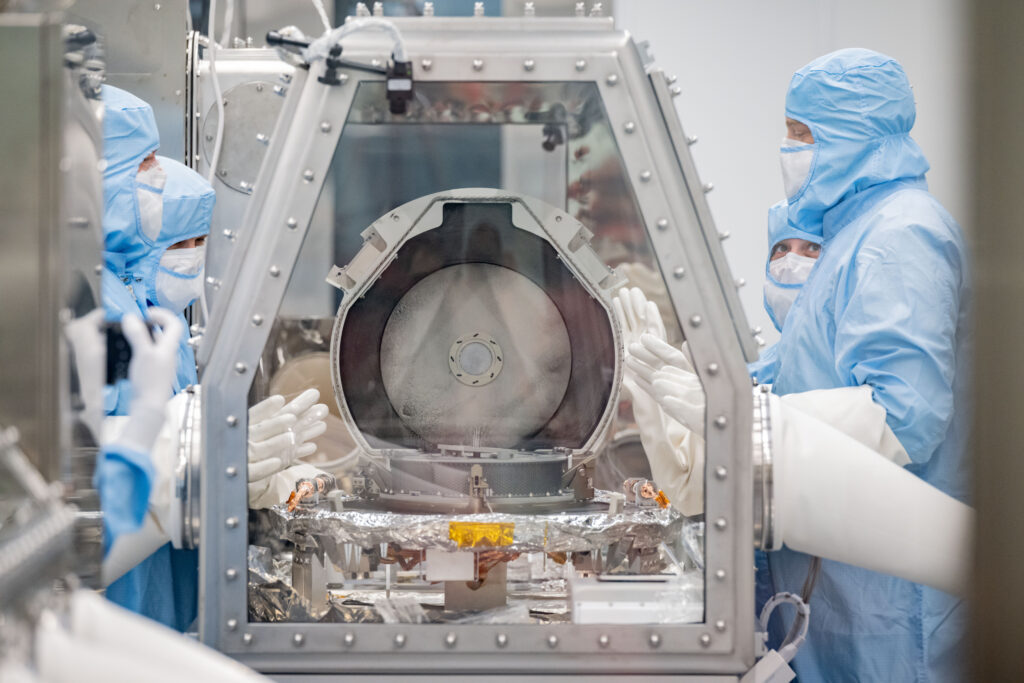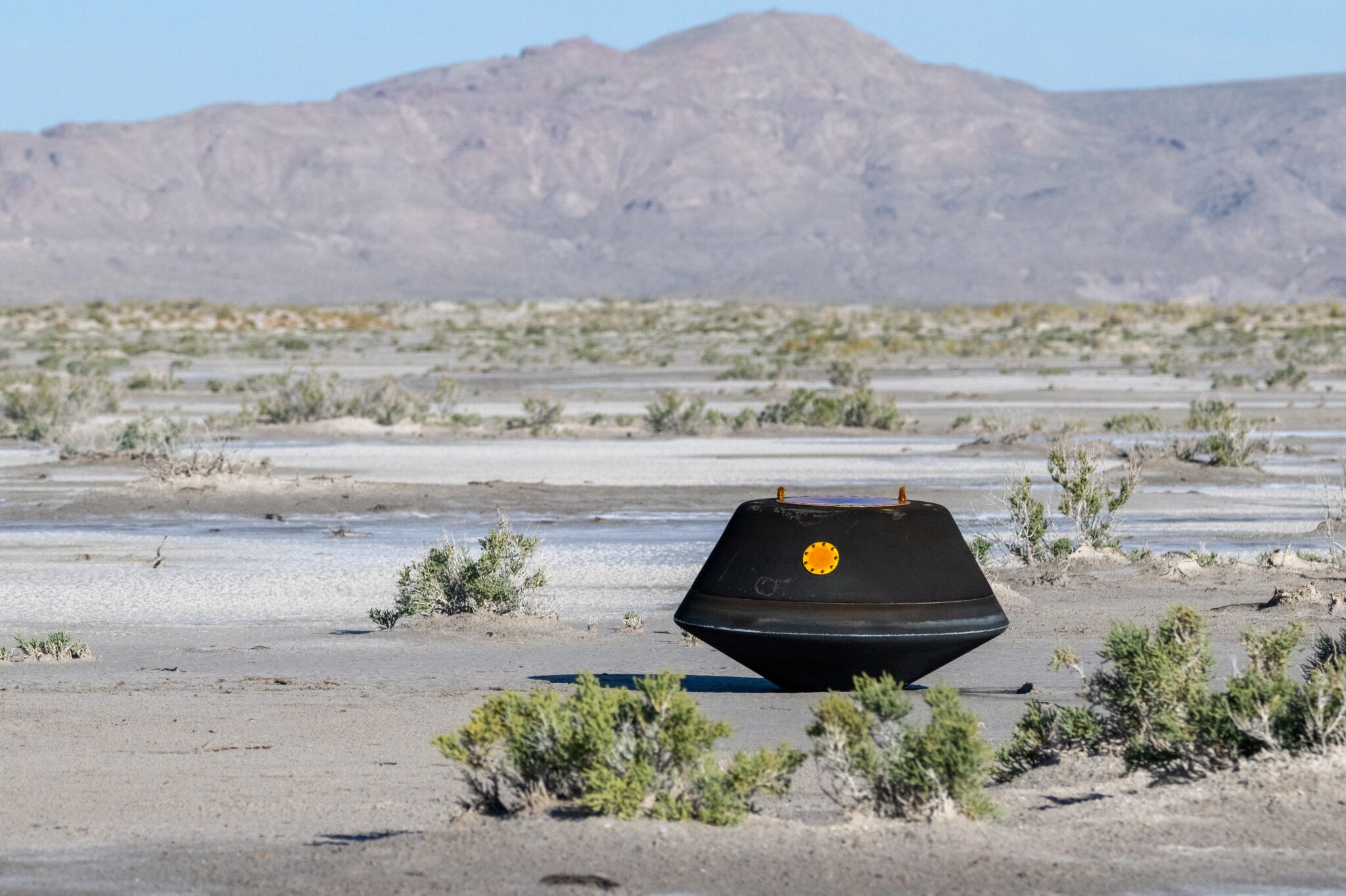The capsule with samples of the asteroid Bennu delivered to Earth is now being actively investigated. Scientists share their first impressions. The researchers opened a canister with samples on September 26. To their surprise, there was a large amount of dark, fine-grained material on the inside of the lid and bottom of the container. This discovered additional number of samples can become a key source of information about the asteroid even before the main sample is analyzed.

The samples were delivered by NASA’s OSIRIS-REx spacecraft to Earth on September 24. It is worth noting that this happened within the framework of a 7-year mission. Thanks to this mission, the spacecraft traveled to the asteroid Bennu. It is located about 320 million km from Earth. After landing on an asteroid and successfully collecting samples, the spacecraft returned to Earth. The total flight distance was about 6 billion km.

The day after landing, the team delivered a container with samples to NASA’s Johnson Space Center in Houston. There is a clean room in this center, specially designed for detailed analysis of space samples.
Asteroid Bennu is a time machine
Asteroids are considered remnants of the formation of our Solar System. They help scientists understand the chaotic early times when planets appeared. However, near-Earth asteroids also pose a threat to Earth, so it is important to understand their composition and orbits to develop methods to protect our planet from such objects.

In October 2020, the OSIRIS-REx spacecraft used the TAGSAM (Touch-and-Go Sample Acquisition Mechanism) device to collect a sample from the surface of the asteroid Bennu. It took so much material that the particles scattered in space, and the container barely closed. This aroused the interest of scientists, who were counting on a quick analysis of this material after the opening of the canister. It turns out that they have enough time, since the analysis of samples from the outer part of TAGSAM has already begun.
In parallel, rapid analysis of the sample collected from the surface of the TAGSAM head continues, and it can give the first results regarding the material obtained from the asteroid Bennu. The team of scientists will use electron microscopes, X-ray and infrared instruments for an in-depth study of the sample. These tools will help determine the chemical composition of the material, identify the presence of hydrated minerals or organic particles, and study the various types of minerals that are present on the asteroid.

On October 11, the first samples from the asteroid Bennu will be shown to the public live on the official NASA page.
Asteroids as water sources
Scientists believe that asteroids like Bennu could, at the initial stages of the formation of our planet, deliver important elements for life to Earth, for example, water. Studying this sample may provide answers to long-standing questions about the origin of our Solar System.
Meanwhile, the spacecraft that delivered the sample received a new name — OSIRIS-APEX. It is sent to study the near-Earth asteroid Apophis, which in 2029 will come so close to Earth that it can be seen with the naked eye.
According to CNN.
Follow us on Twitter to get the most interesting space news in time
https://twitter.com/ust_magazine
